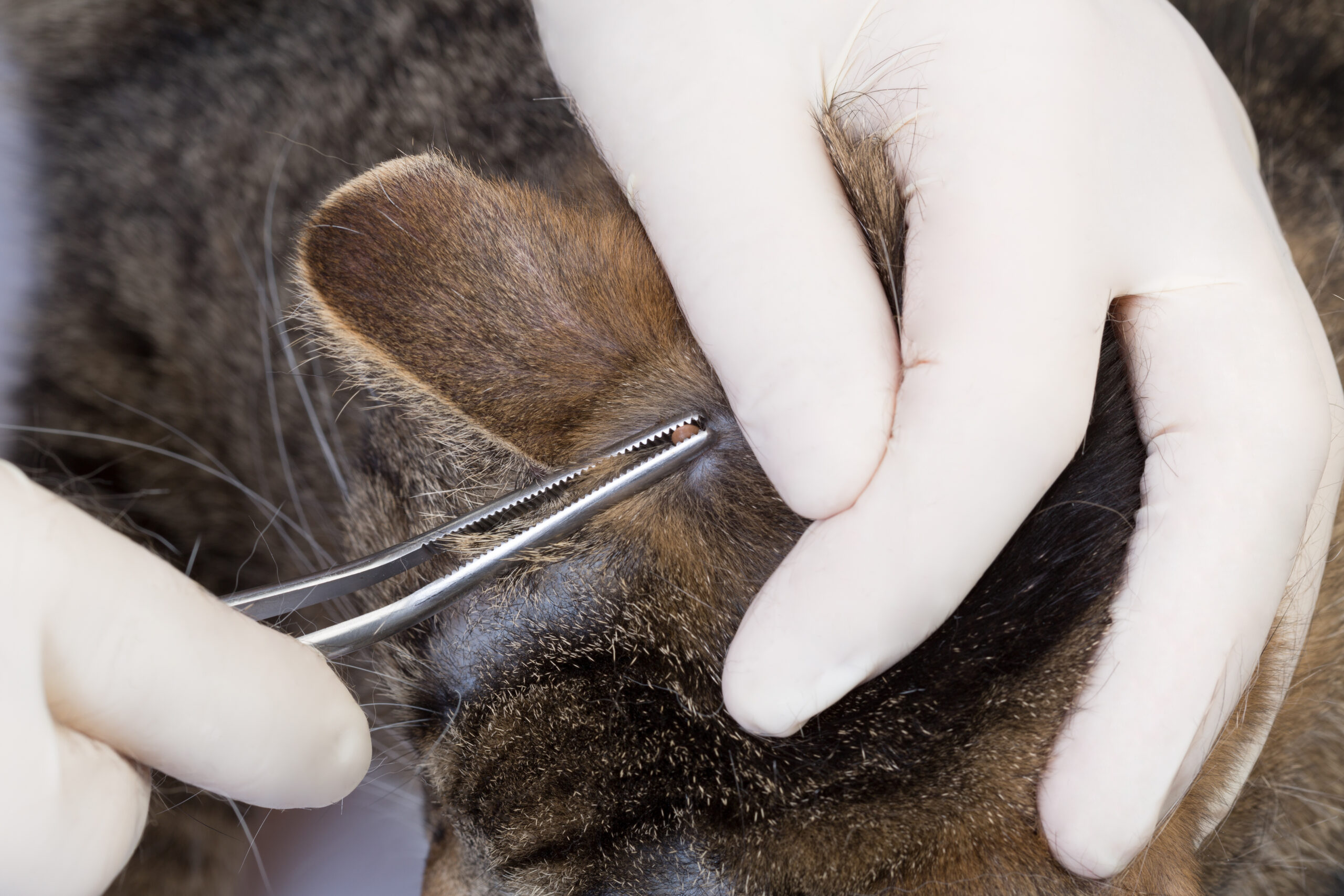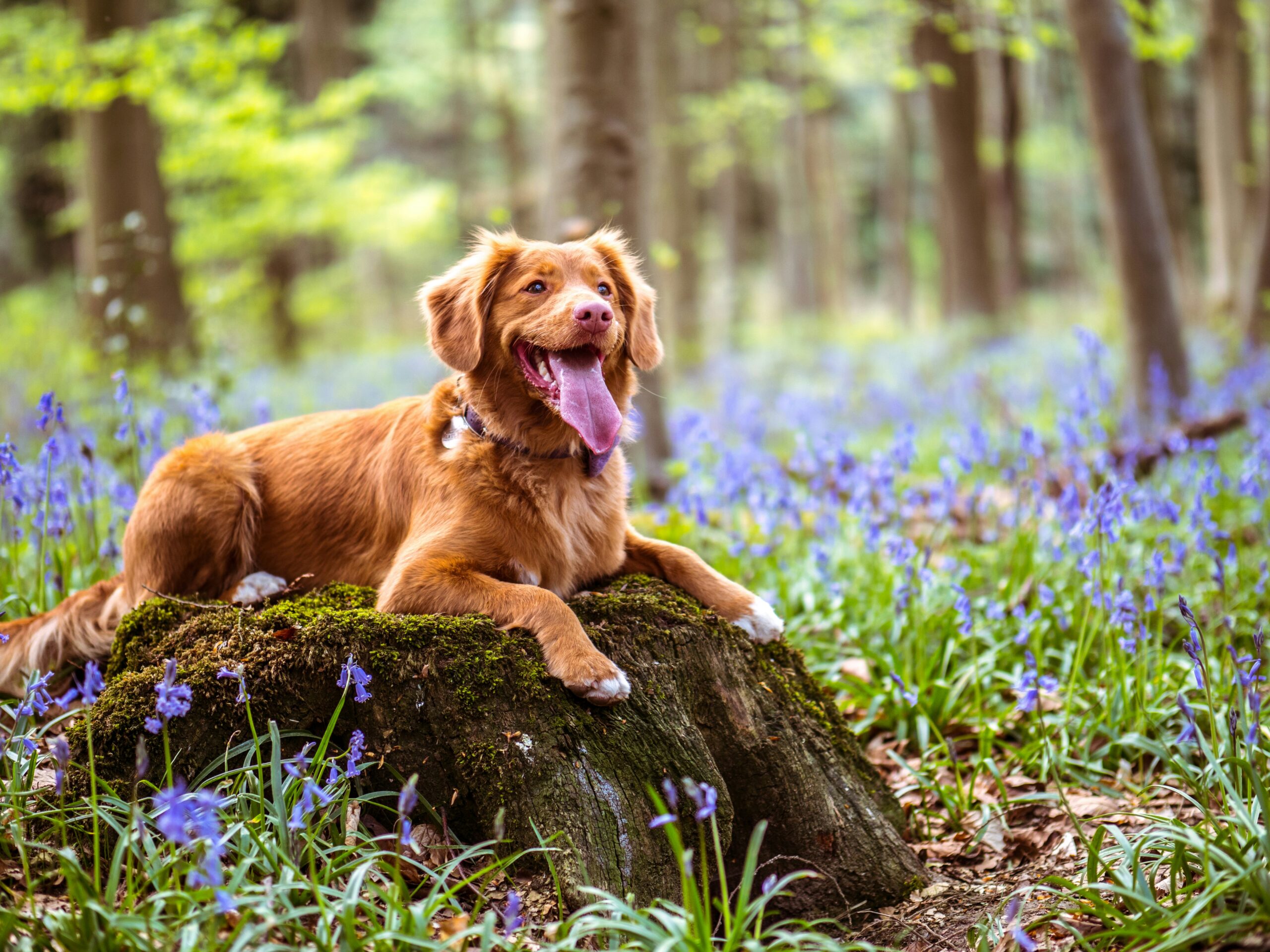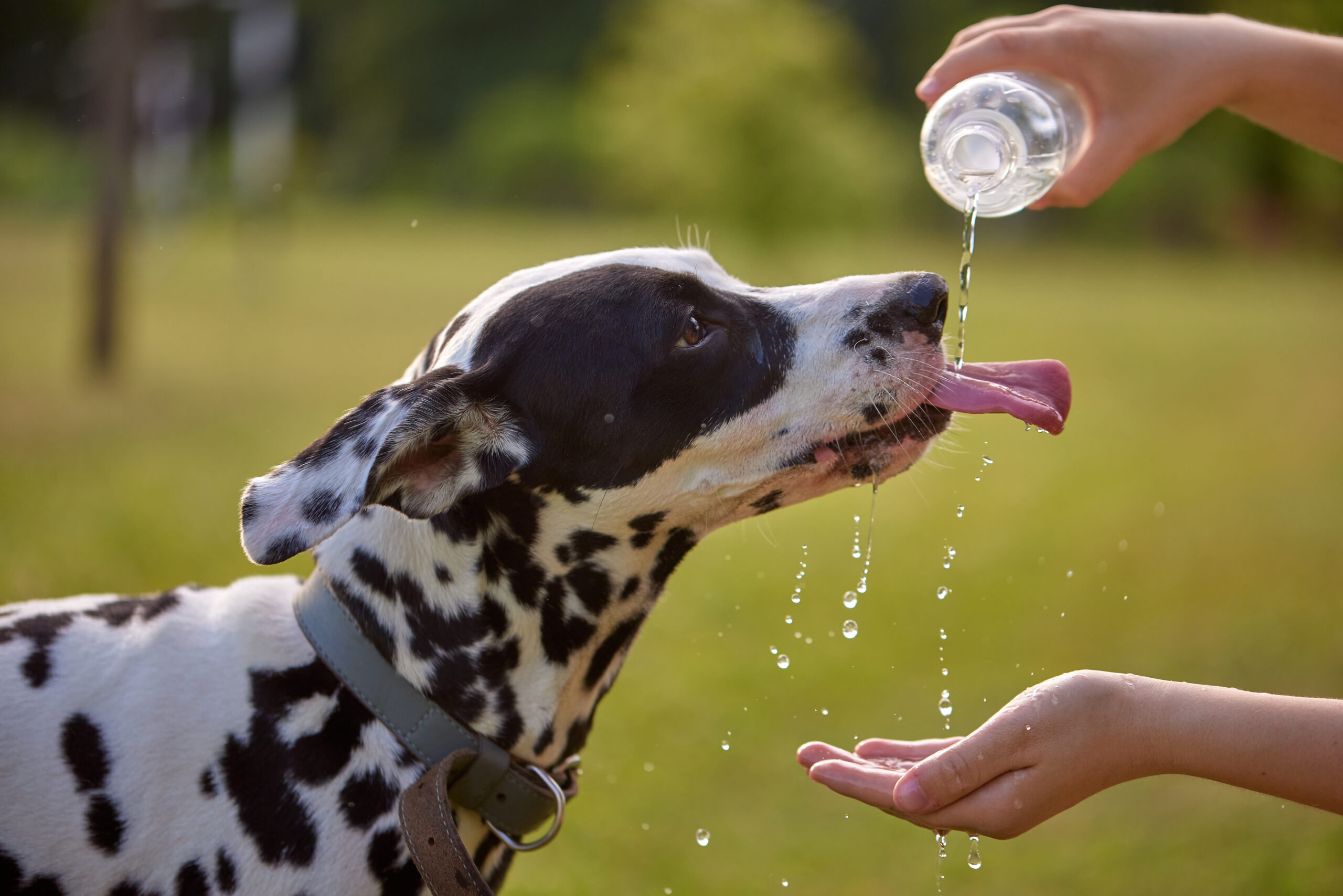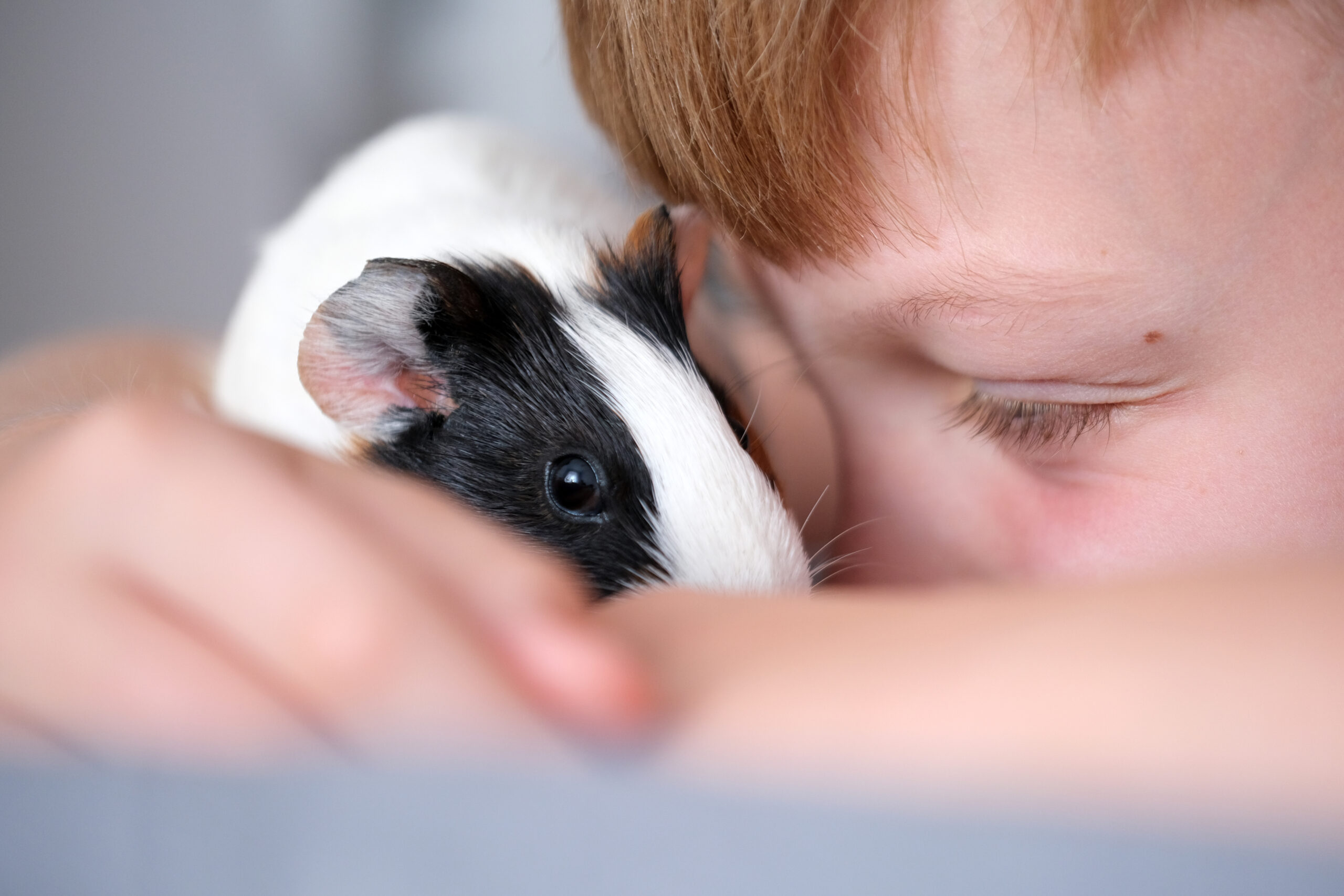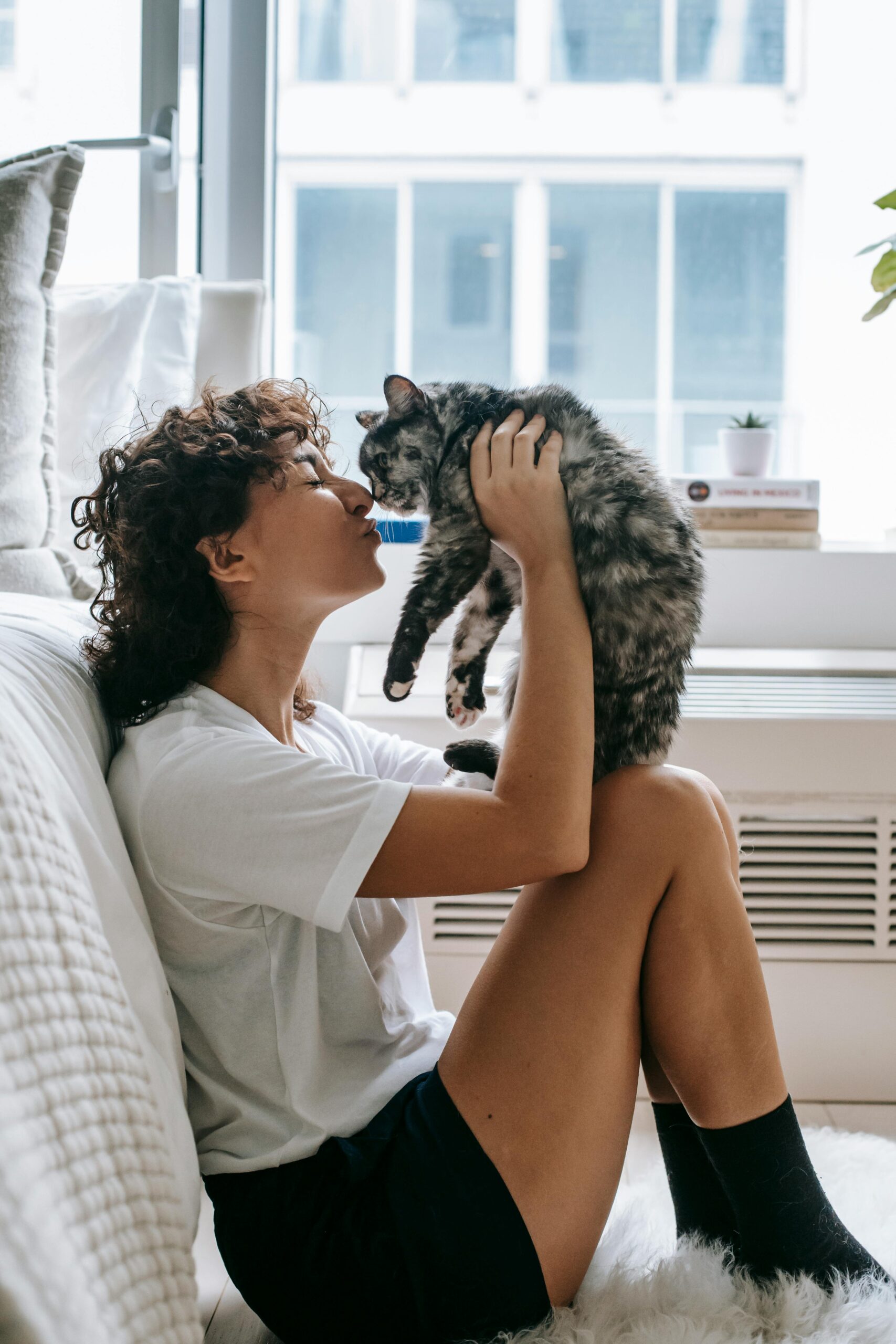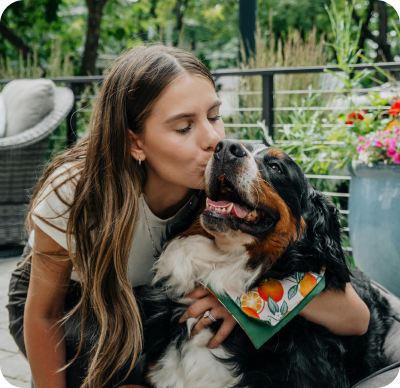How to Safely Remove a Tick from Your Pet
Pet Advice
How to Safely Remove a Tick from Your Pet
Ticks are common external parasites that can latch onto your pet’s skin and cause discomfort, but they can also transmit serious diseases like Lyme disease, babesiosis, and anaplasmosis. It’s essential to remove ticks from your pet promptly and safely to prevent any potential health risks.
Here’s everything you need to know about removing a tick from your dog or cat.
01
Why You Need to Remove a Tick Quickly
Ticks can carry a range of harmful diseases that they can transmit to your pet through their bite. The longer a tick stays attached, the higher the risk of disease transmission. Removing a tick as soon as you spot it can help reduce the likelihood of infection.
02
How to Check Your Pet for Ticks
Ticks are most commonly found on your pet’s head, ears, neck, and underarms, but they can attach anywhere on the body. After walks or outdoor play, always check your pet thoroughly for ticks. Run your hands over their coat and feel for any bumps or unusual lumps. If you find a tick, act quickly to remove it.
03
What You’ll Need to Remove a Tick
Before you begin the removal process, make sure you have the right tools to safely remove the tick:
04
Steps to Safely Remove a Tick from Your Pet
Stay Calm and Calm Your Pet Removing a tick should be done calmly and efficiently. Start by making sure your pet is relaxed. If necessary, ask someone to help you gently hold your pet still. A calm environment will make the process easier for both you and your pet.
05
What to Do After Tick Removal
After removing the tick, closely monitor your pet for any signs of infection or illness. Some common symptoms to look out for include:
If you notice any of these symptoms or if you’re unsure about the tick’s removal, don’t hesitate to contact your veterinarian. They can help assess your pet’s health and recommend further treatment or testing if necessary.
06
How to Prevent Future Tick Bites
To minimize the risk of ticks in the future, consider taking the following preventive measures:
Final Thoughts: Keep Your Dog Cool and Safe
The summer heat can be hard on your dog, but with a little preparation and care, you can help them stay cool, comfortable, and safe all season long. Always pay attention to your dog’s behavior, keep them hydrated, and take steps to protect them from the sun and heat. If you’re ever unsure about how to care for your dog during the summer months, consult your vet for advice tailored to your pet's specific needs. By following these tips, you can ensure your dog enjoys a safe and happy summer, filled with fun activities and plenty of cool rest breaks!
Breeding 101: Must-Know Information for Responsible Pet Breeding
Pet Advice
Keeping Your Dog Safe in the Summer Heat
Summer is a fun time for both you and your dog, but the hot weather can pose some serious health risks for your furry friend. Dogs can easily become overheated, especially in extreme temperatures.
To help ensure your dog stays cool, safe, and comfortable throughout the summer months, here are some important tips to keep in mind:
01
Keep Your Dog Hydrated
One of the most important things you can do to keep your dog safe in the heat is to make sure they have access to plenty of fresh water at all times. Dehydration can happen quickly on hot days, so be sure to refill their water bowl regularly. If you’re out on walks or trips, always carry water and a portable bowl to keep them hydrated while on the go.
02
Avoid the Hottest Part of the Day
The sun is at its hottest between 11 AM and 4 PM, and during this time, it’s best to avoid outdoor activities. If you need to take your dog for a walk, do it early in the morning or later in the evening when the temperature is cooler. These times also help avoid walking on hot pavement, which can burn your dog’s paw pads.
03
Regular Cleaning and Hygiene
Dogs, especially those with thick coats, can easily overheat if they don’t have a cool spot to rest. When outside, make sure there is plenty of shade for your dog to relax in, and always provide a well-ventilated area for them to rest indoors. You can also set up a fan or air conditioning to keep them cool inside.
04
Watch for Heatstroke Symptoms
Heatstroke is a serious concern in hot weather, and dogs are particularly vulnerable. The signs of heatstroke in dogs include excessive panting, drooling, lethargy, confusion, vomiting, and in severe cases, loss of consciousness. If you notice any of these signs, it’s crucial to get your dog to a cool place, offer them water, and contact your vet immediately.
05
Protect Their Paws
Hot pavement, sand, or gravel can burn your dog’s sensitive paw pads. If you need to walk your dog in the heat, try walking on grass or shaded paths. You can also buy protective booties for your dog’s paws, which are especially useful for dogs that love to walk on hot surfaces. Always check their paws after walks for any signs of burns or injuries.
06
Don’t Leave Your Dog in the Car
Never leave your dog in a parked car, even for a few minutes. Cars can heat up quickly, even on mild days, and the interior temperature can soar to dangerous levels in just minutes. Leaving your dog in a hot car can result in heatstroke, or worse. If you have to leave your dog in the car, it’s better to leave them at home in a cool, shaded area.
07
Regular Grooming
Dogs with thick or long coats are more susceptible to heat, so regular grooming is important during the summer. Brushing your dog’s fur helps remove loose hair and prevents matting, which can trap heat. If your dog has a thick coat, you can ask your groomer to trim it down to help them stay cooler. Be careful not to shave their coat completely, as this can leave them vulnerable to sunburn.
08
Provide Frozen Treats
Frozen treats are a fun way to keep your dog cool while also providing some extra hydration. You can freeze dog-safe treats, like chicken broth ice cubes or frozen watermelon slices, to give your dog a refreshing snack on hot days. You can also freeze small portions of their food or create dog-friendly popsicles by freezing peanut butter or yogurt.
09
Know Your Dog’s Breed
Certain breeds are more susceptible to heat than others. Short-nosed dogs (like Bulldogs, Pugs, and Boxers) struggle more with breathing and cooling off, making them particularly vulnerable to heat-related issues. If your dog has any health conditions, like heart disease or respiratory problems, they may be at even greater risk during hot weather. Be extra cautious with these breeds and monitor them closely in the summer.
10
Be Careful Around Water
Many dogs love to swim in the summer, but it’s important to ensure they stay safe in the water. Always supervise your dog when they’re near a pool, lake, or beach, and make sure the water is safe for them to swim in. Never let your dog swim in unfamiliar or deep water unless they’re a strong swimmer, and always rinse off your dog after swimming to remove chlorine or saltwater.
Final Thoughts: Keep Your Dog Cool and Safe
The summer heat can be hard on your dog, but with a little preparation and care, you can help them stay cool, comfortable, and safe all season long. Always pay attention to your dog’s behavior, keep them hydrated, and take steps to protect them from the sun and heat. If you’re ever unsure about how to care for your dog during the summer months, consult your vet for advice tailored to your pet's specific needs.
By following these tips, you can ensure your dog enjoys a safe and happy summer, filled with fun activities and plenty of cool rest breaks!
Keeping Your Dog Safe in the Summer Heat
Pet Advice
Breeding 101: Must-Know Information for Responsible Pet Breeding
Breeding pets is a significant responsibility that requires knowledge, dedication, and careful planning. Whether you're considering breeding your dog or cat, it's essential to understand the process, the potential risks, and the responsibilities involved to ensure the health and well-being of both the mother and her puppies or kittens.
Here’s everything you need to know before deciding to breed your pet.
01
Understand the Responsibility Involved
Breeding isn’t just about producing puppies or kittens; it’s about ensuring the health, safety, and well-being of both the parent animals and their offspring. It requires careful planning and a long-term commitment. In addition to the financial and time commitments, you’ll also need to be prepared for the emotional responsibility of caring for both the mother and her litter.
Key Points to Consider:
02
Health Testing and Genetic Screening
One of the most critical steps before breeding is ensuring both the mother and father are healthy. Breeding should only take place when both animals are in optimal health to avoid passing on hereditary health problems. Before breeding, you should have the animals thoroughly examined by a veterinarian, and both should undergo screening for genetic conditions, infectious diseases, and parasites.
Health Screening and Testing Include:
03
Choosing the Right Mate
When it comes to breeding, selecting the right mate for your pet is crucial. It’s important to choose a mate that complements your pet’s traits, temperament, and health. Responsible breeders often choose mates who are not only healthy but also possess desirable characteristics that contribute to the breed standard.
What to Look for in a Mate:
04
Preparing for Pregnancy and Birth
Once you’ve selected a mate, it’s essential to prepare for the pregnancy and birth. A mother’s pregnancy (gestation) typically lasts around 63 days, but it can vary slightly. During this time, she will need special care and attention to ensure she remains healthy and that the developing puppies or kittens have the best chance at a healthy start.
Things to Keep in Mind:
05
Preparing for Labor and Whelping or Kitting
As the due date approaches, it’s important to know the signs of labour and be prepared for the birth. For dogs, the process is known as whelping, and for cats, it’s called kitting. Knowing the normal signs of labour can help you provide appropriate care and be ready to assist if needed.
Signs of Labour:
Be sure to have clean towels, gloves, and a safe area prepared for the birth. In some cases, complications can arise, and you should always have the contact information for an emergency vet in case assistance is needed.
06
Post-Birth Care and Socialisation
After the puppies or kittens are born, it’s essential to provide proper care for both the mother and her litter. The mother will need to nurse and bond with her young, and it’s important to monitor the puppies or kittens to ensure they’re feeding properly and gaining weight.
Key Steps for Post-Birth Care:
As the puppies or kittens grow, it’s important to start socialising them early to ensure they develop into well-adjusted, friendly pets. Handle the babies gently, introduce them to different environments, sounds, and people, and start basic socialisation early. This will help them grow into confident, friendly pets.
07
Finding Responsible Homes
One of the most critical aspects of breeding is ensuring that you find responsible, loving homes for all the puppies or kittens once they are old enough. This is where careful planning comes into play. Research potential adopters thoroughly to ensure they are prepared for the responsibility of owning a pet.
Tips for Finding Responsible Homes:
08
Spaying and Neutering
Once the breeding process is complete, consider spaying or neutering your pets to avoid accidental litters in the future. Spaying or neutering also helps reduce the risk of certain health issues, including cancers, and can improve behaviour in pets.
Final Thoughts: Be a Responsible Breeder
Breeding is a big responsibility and should not be taken lightly. It requires dedication, patience, and a deep understanding of your pet’s health and well-being. Always breed responsibly and prioritise the health of the animals involved. If you are uncertain or inexperienced, consider working with a reputable breeder or seeking advice from your veterinarian. By following these guidelines, you can ensure that you’re making informed decisions that benefit both the parents and the puppies or kittens they produce.
Before you breed your pet, be sure you’re prepared to give them the care and attention they deserve—during pregnancy, labour, and the rearing of their young. Your commitment will make a huge difference in the lives of the animals involved.
By following these tips, you can ensure your dog enjoys a safe and happy summer, filled with fun activities and plenty of cool rest breaks!
Essential Pet Care Tips for Small Animals
Pet Advice
Essential Pet Care Tips for Small Animals
Small animals like rabbits, guinea pigs, hamsters, and rats make wonderful pets, but they require specific care to stay healthy and thrive. Here’s a guide to keeping your small pet happy:
With the right care, your small pet can live a happy, healthy life full of joy and companionship.
01
Create the Right Habitat
Providing your small pet with a comfortable, safe living space is essential. Whether it’s a cage, hutch, or pen, make sure it’s big enough for your pet to move around comfortably. Include plenty of bedding, hideaways, and places to nest. Small animals also need enrichment, such as chew toys, tunnels, and climbing structures.
02
Proper Diet for Small Pets
Each type of small pet has specific dietary needs. For example, rabbits and guinea pigs require a high-fibre diet with fresh hay and vegetables, while hamsters and rats enjoy seeds and fresh fruits. Be sure to research the best diet for your pet and avoid sugary or fatty foods that could harm their health.
03
Regular Cleaning and Hygiene
Small animals tend to make messes, so cleaning their habitat regularly is important. Spot clean their living area daily, and do a full cleaning weekly. Fresh bedding is essential for keeping them comfortable and free from illness.
04
Exercise and Mental Stimulation
Small pets need regular physical and mental exercise to stay happy. Offer them plenty of playtime outside of their cage in a safe, supervised area. Interactive toys, tunnels, and obstacle courses will help keep them active and engaged.
05
Grooming Needs
Different small pets have different grooming needs. Long-haired pets, like guinea pigs, may require regular brushing to avoid matting. Rabbits also need to be brushed regularly to prevent hairballs. Keep an eye on their nails and teeth, as some pets need help maintaining these.
06
Health Monitoring
While small animals tend to hide signs of illness, be observant for any changes in behaviour, eating habits, or droppings. If you notice anything unusual, such as weight loss, lethargy, or loss of appetite, it’s important to consult with a vet who specialises in small animals.
How to Care for Your Cat: The Ultimate Guide
Pet Advice
How to Care for Your Cat: The Ultimate Guide
Cats are independent creatures, but they still need the right care to stay healthy and happy. Whether you have a playful kitten or a senior cat, here are some tips for taking care of your feline friend:
Taking good care of your cat will help ensure they stay happy, healthy, and content, and deepen the bond you share with them.
01
Provide a Safe and Comfortable Environment
Cats love comfort and security. Make sure your home is safe for them to explore, with plenty of hiding spots, scratching posts, and comfy places to nap. Cats also enjoy windows where they can watch the world go by, so provide them with a perch near a window if possible.
02
Balanced Diet and Fresh Water
Feeding your cat the right type of food is essential for their health. Ensure their diet is suitable for their age and lifestyle, whether they’re a kitten, adult, or senior cat. Make sure they always have access to fresh water to stay hydrated, as cats can sometimes be picky drinkers.
03
Regular Grooming and Care
Cats are generally good at grooming themselves, but regular brushing helps reduce hairballs and keeps their coat shiny. Long-haired cats, in particular, require more frequent grooming. Additionally, trimming their claws when needed helps prevent scratching damage to furniture.
04
Litter Box Maintenance
Cats are very particular about their litter boxes. Make sure to keep it clean by scooping it daily and changing the litter regularly. The box should be placed in a quiet, accessible area where your cat can feel at ease.
05
Mental and Physical Stimulation
Though cats love to nap, they also need playtime and stimulation. Use toys, cat trees, and interactive play to keep them active and engaged. Providing them with variety will help prevent boredom and destructive behaviour.
06
Regular Vet Visits
Even though cats are masters at hiding illness, regular vet visits are important. Schedule annual check-ups to monitor their health, and make sure their vaccinations are up to date. If you notice any signs of illness, such as changes in appetite or behaviour, don’t hesitate to contact your vet.
Top Tips for Keeping Your Dog Happy and Healthy
Pet Advice
Top Tips for Keeping Your Dog Happy and Healthy
As a dog owner, you want your furry friend to live a long and happy life. Proper care is essential for ensuring your dog stays healthy, active, and emotionally content. Here are some key tips to keep your dog feeling their best:
By following these simple steps, you can help your dog live a long and happy life full of joy and wagging tails!
01
Regular Exercise is a Must
Dogs need daily physical activity to stay fit and happy. Regular walks, playtime, and mental stimulation will keep your dog’s body and mind active. Make sure you choose the right amount of exercise based on your dog’s breed and age. Puppies and high-energy dogs may require longer walks and more playtime, while older dogs may need shorter, gentler strolls.
02
Healthy Diet for a Healthy Life
Your dog’s diet plays a huge role in their health. Ensure you’re feeding them high-quality dog food appropriate for their age, size, and health condition. Avoid overfeeding and keep an eye on their weight to prevent obesity. Don’t forget to provide fresh water throughout the day!
03
Regular Vet Check-ups
Routine visits to the vet are vital for maintaining your dog’s health. Regular check-ups allow your vet to spot potential health issues early and ensure vaccinations are up to date. Routine flea and tick prevention is also important, especially during warmer months.
04
Grooming and Hygiene
Keep your dog clean with regular grooming. Brush their coat to prevent matting, and trim their nails regularly. Bathing your dog with pet-safe products ensures their skin stays healthy. Don’t forget dental care – brushing your dog’s teeth helps prevent bad breath and dental diseases.
05
Socialisation and Mental Stimulation
Dogs are social animals and thrive when they interact with other dogs and humans. Regular socialisation can prevent behavioural issues and improve their overall well-being. Puzzle toys and training sessions are also great ways to keep their minds sharp.

